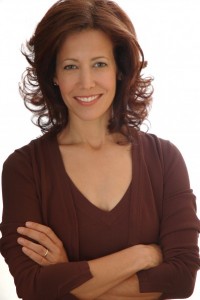 Recently, the New York Observer ran a wonderful profile of Amy Einhorn, publisher and VP of Amy Einhorn Books at Penguin. Einhorn is known for publishing bestselling fiction that deftly straddles the commercial/literary divide – most notably the 2009 blockbuster The Help.
Recently, the New York Observer ran a wonderful profile of Amy Einhorn, publisher and VP of Amy Einhorn Books at Penguin. Einhorn is known for publishing bestselling fiction that deftly straddles the commercial/literary divide – most notably the 2009 blockbuster The Help.
In the profile, The Observer’s Emily Witt depicts Ms. Einhorn as an expert curator – former colleagues note Einhorn’s “almost mystical editorial instinct,” and Witt highlights her thorough editing and hands-on approach with booksellers. Einhorn has made a name for herself with booksellers, reviewers, and industry insiders for her impeccable taste – she’s become a curator of books that everyone will love.
This got me to thinking about the importance of curators in this moment and time – and how a book publicist fills that role with the media.
We live in a time of information overload, and we need tools to help us decide what to pay attention to, and what to ignore. Sometimes those tools are technology-based – Bing, Pinterest and Newsmap are a few that come to mind. But more often than not, our curating tools are people – friends, thought leaders, and like-minded colleagues. It’s the reason so many people get their news through Twitter, look for restaurants on Yelp, or get book recommendations on GoodReads – we look to people we trust to act as filters.
When it comes to getting your book covered by the traditional media, your publicist acts as a curator—a filter—for journalists.
There are approximately 11,000 business books published every year. We’ve had journalists tell us they receive upwards of 100 books every week, and hundreds of pitches every day. They’re inundated, but they’re still looking for ideas and sources – they just need help sorting the helpful information from the irrelevant.
This is where your publicist comes in. Good publicists develop relationships with journalists by understanding what they cover and what they need – and then delivering it at the right moment in the news cycle. Book publicists become curators of ideas and the thought leaders behind them – which means we are here to serve not only our clients, but the media as well. It’s what Mackenzie Dawson – former publicist turned features editor for the Daily News – calls the “dual client system.”
Being a curator comes with responsibility – to the people whose ideas you’re representing, as well as to the people to whom you act as a filter. Navigating this “dual client” arrangement can be tricky, but I happen to love it – it’s often how you get the biggest hits for your clients (like this one in the New York Times). While good publicists understand their curator role, I realize it can be confusing – and frustrating – for the author who plays one part of the equation. For a better understanding of this unique dynamic, check out Kaila’s fantastic post on the topic from last week. She has some great advice for working with your publicist on getting your message heard in this context.